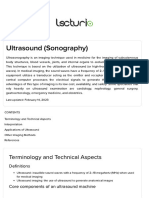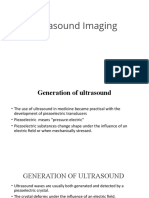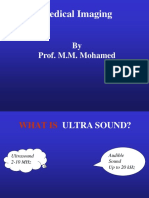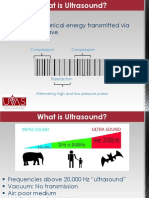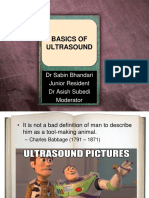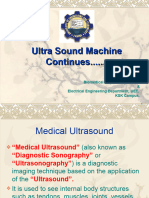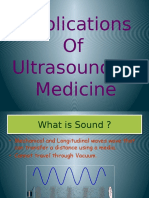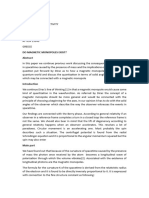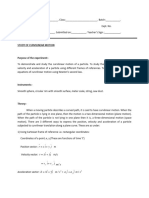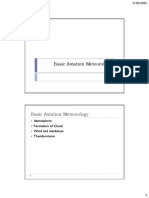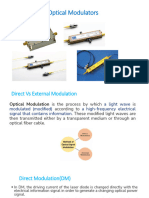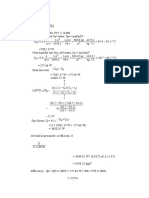0% found this document useful (0 votes)
77 views22 pagesVenkanna - CH, M.Tech (E.I.), 104018
Ultrasound uses high-frequency sound waves to produce images of the inside of the body. It has several medical uses such as examining organs and blood flow, monitoring pregnancies, and detecting abnormalities. The overall system includes a transducer that transmits sound waves into the body and receives echoes to create images. Different imaging modes like B-mode and Doppler are used to visualize tissues and blood flow. Ultrasound has benefits like being noninvasive, painless, and inexpensive compared to other methods. While safe for diagnostic use, it has limitations with penetrating bone and imaging larger patients.
Uploaded by
venkannacCopyright
© © All Rights Reserved
We take content rights seriously. If you suspect this is your content, claim it here.
Available Formats
Download as PPTX, PDF, TXT or read online on Scribd
0% found this document useful (0 votes)
77 views22 pagesVenkanna - CH, M.Tech (E.I.), 104018
Ultrasound uses high-frequency sound waves to produce images of the inside of the body. It has several medical uses such as examining organs and blood flow, monitoring pregnancies, and detecting abnormalities. The overall system includes a transducer that transmits sound waves into the body and receives echoes to create images. Different imaging modes like B-mode and Doppler are used to visualize tissues and blood flow. Ultrasound has benefits like being noninvasive, painless, and inexpensive compared to other methods. While safe for diagnostic use, it has limitations with penetrating bone and imaging larger patients.
Uploaded by
venkannacCopyright
© © All Rights Reserved
We take content rights seriously. If you suspect this is your content, claim it here.
Available Formats
Download as PPTX, PDF, TXT or read online on Scribd
/ 22



























